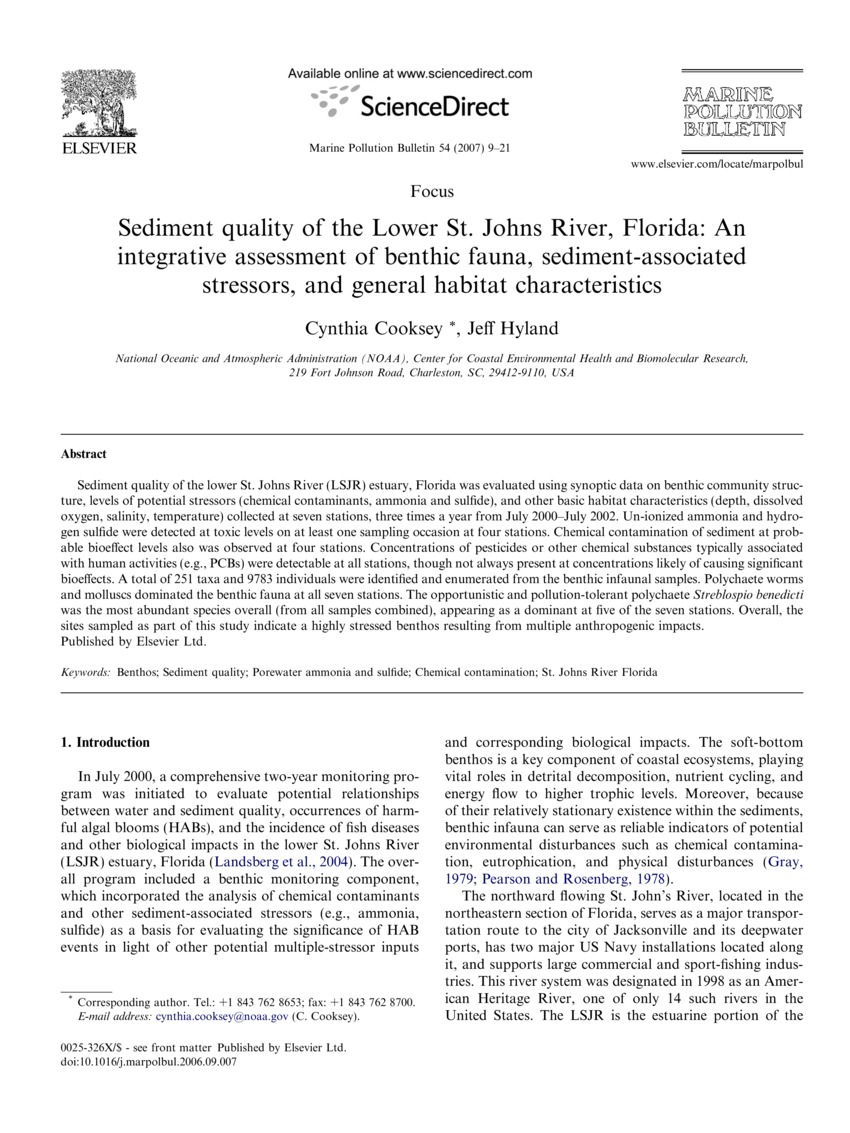Journal Article
AccessSediment Quality of the Lower St. Johns River, FL: An Integrative Assessment of Benthic Fauna, Sediment-Associated Stressors, and General Habitat Characteristics
Sediment quality of the lower St. Johns River (LSJR) estuary, Florida was evaluated using synoptic data on benthic community structure, levels of potential stressors (chemical contaminants, ammonia and sulfide), and other basic habitat characteristics (depth, dissolved oxygen, salinity, temperature) collected at seven stations, three times a year from July 2000–July 2002. Un-ionized ammonia and hydrogen sulfide were detected at toxic levels on at least one sampling occasion at four stations. Chemical contamination of sediment at probable bioeffect levels also was observed at four stations. Concentrations of pesticides or other chemical substances typically associated with human activities (e.g., PCBs) were detectable at all stations, though not always present at concentrations likely of causing significant bioeffects. A total of 251 taxa and 9783 individuals were identified and enumerated from the benthic infaunal samples. Polychaete worms and molluscs dominated the benthic fauna at all seven stations. The opportunistic and pollution-tolerant polychaete Streblospio benedicti was the most abundant species overall (from all samples combined), appearing as a dominant at five of the seven stations. Overall, the sites sampled as part of this study indicate a highly stressed benthos resulting from multiple anthropogenic impacts.
Publisher - Elsevier
Subjects - Benthic Colonization; Sediment, River
Citation: Cooksey C, Hyland JL. 2007. Sediment Quality of the Lower St. Johns River, FL: An Integrative Assessment of Benthic Fauna, Sediment-Associated Stressors, and General Habitat Characteristics. Mar. Pollut. Bull.; 54(1):9-21
